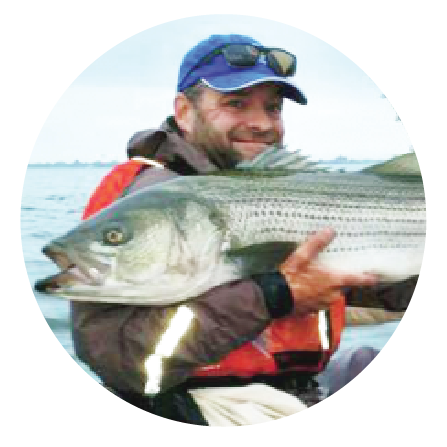By Mike Baker
When headed out kayak fishing for striped bass, using live eels whether it’s day or night is almost always effective. The slime-covered serpents can be hard to deal with – from near impossible to hold to knotting themselves into the dreaded eel knot around your line. When presented to a striped bass correctly, they are almost never ignored. I want to share with you what I find to make them more manageable and how I fish them.
First off, I trap my own eels using fresh caught mackerel placed inside a basic minnow trap, put the bait into a chum bag so that it does not get eaten by the eels, just attracts them. If the bait gets eaten, you will catch far less. Usually from dusk till dawn, eels are most active in any tidal river. To transport them for short distances, a cooler will work. If it’s going to be a longer period of time, I suggest two 5 gallon buckets stacked inside one another with holes drilled into the bottom of the top bucket to let the slime sink, and to prevent them from drowning in the slime. I also suggest air pumps and a larger container to store them longer. If that’s the case, change the water once a day if it’s not filtered (check local laws in your area first).
I keep the eels in a chum bag inside a small cooler filled with crushed ice. The ice makes the eels lethargic and manageable. By keeping the eels in the chum bag, you can use the texture of the bag to get a grip and slide just the head out of the bag to place the hook through the lower jaw and out an eye socket. If it squirms, all you do is drop it back into the bag, instead of off the kayak or through a scupper hole.
My approach is to troll them in tidal rivers during the day, and beach fronts at night, keeping them 30 to 60 feet behind me at 1 to 1.5 mph. Try not to let the eel swim into a structure on its own, and keep some tension on it at all times if you can. I use Adrenaline custom rods and a conventional style Avet reel-set to free spool and bait clicker engaged so when the fish strikes, it feels no resistance and makes a solid run before I set the hook. I use 50-lb power pro and 50-lb mono or fluorocarbon. The lengths depend on the structure. If fishing a rocky structure, use a longer leader to avoid bigger fish running your braid through the rocks – which is much less abrasion resistant than mono or fluro. I hope this helps out kayak anglers out there.

